#Mutoh
Text
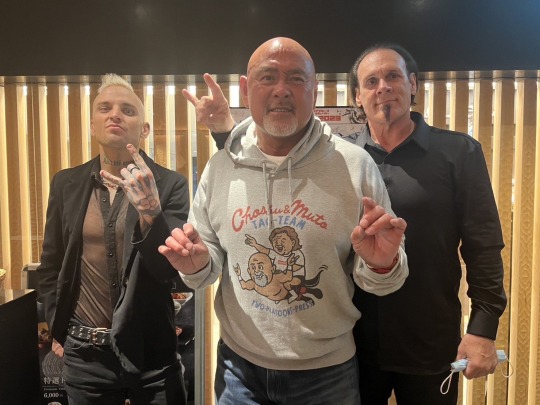
#Darby Allin#Keiji Mutoh#Sting#Mutoh#Great Muta#Muta#aew#njpw#pro wrestling noah#new japan pro wrestling#Noah#AJPW
62 notes
·
View notes
Text
TEXTILE DESIGN IN 2023-24

Overview of top textile importer, exporter countries & manufacturing industries.
Textile design is the art of creating designs for woven, knitted, or printed fabrics. It is an integral part of the textile industry, which encompasses the production of fibers, yarns, fabrics, and finished textile products. Textile design is a vast field that encompasses a wide range of techniques and processes, including drawing, painting, printing, weaving, and embroidery. In this article, we will explore the history of textile design, the various techniques used in textile design, and the current trends in the field.
History of Textile Design
Textile design has a long and rich history that dates back to prehistoric times. The first textiles were made by hand using natural fibers such as flax, cotton, and wool. These fibers were spun into yarn and woven into fabrics using simple looms. Textiles were used for clothing, bedding, and household items such as curtains and tablecloths.
Over time, textile design became more complex as new techniques and materials were developed. The introduction of the spinning wheel in the Middle Ages allowed for the production of finer and more even yarns. The invention of the Jacquard loom in the 18th century enabled the production of intricate patterns and designs. The Industrial Revolution in the 19th century brought about significant changes in the textile industry, with the introduction of mechanized production methods.
In the 20th century, textile design became an art form in its own right. The development of new synthetic fibers such as nylon and polyester allowed for new possibilities in textile design. The Bauhaus school, founded in Germany in 1919, played a significant role in the development of modern textile design. The school's emphasis on functional design and the use of new materials and techniques had a profound influence on the field.
Techniques Used in Textile Design
Textile design encompasses a wide range of techniques and processes. Some of the most common techniques used in textile design include:
Drawing and Painting: Many textile designs begin as drawings or paintings. Designers use a variety of media, including pencil, pen, ink, and watercolor, to create designs that are then transferred to fabric.
Printing: Printing is a common technique used in textile design. Designs are created on paper using a variety of techniques, such as block printing, screen printing, and digital printing. The designs are then transferred onto fabric using heat or pressure.
Weaving: Weaving is the process of interlacing two or more sets of yarns or threads at right angles to create a fabric. Weaving can be done by hand on a loom or by machine.
Knitting: Knitting is a technique used to create fabrics by interlocking loops of yarn. Knitting can be done by hand or by machine.
Embroidery: Embroidery is the art of decorating fabric or other materials with needle and thread. It is often used to add texture and dimension to textile designs.
Current Trends in Textile Design
Textile design is a constantly evolving field, with new techniques and materials being developed all the time. Some of the current trends in textile design include:
Sustainability: The textile industry is one of the most polluting industries in the world, and there is a growing trend towards sustainable textile design. This includes the use of organic and recycled materials, as well as the development of eco-friendly production methods.
Digital Printing:
Digital printing is a relatively new technique in textile design that allows designers to create complex designs with a high level of detail. It is also more environmentally friendly than traditional printing methods, as it uses less water and produces less waste.
3D Printing:
3D printing is a cutting-edge technology that is being used in textile design to create innovative fabrics with a variety of textures and shapes.
Smart Textiles: Smart textiles are fabrics that are designed to be interactive and responsive.
Smart Textiles:
Smart textiles are fabrics that are designed to be interactive and responsive. They incorporate electronic components such as sensors, actuators, and microcontrollers to enable the fabric to sense and respond to its environment. Smart textiles can be used in a wide range of applications, from fashion to medical devices. For example, smart textiles can be used in clothing to monitor vital signs and adjust temperature, or in bedding to monitor sleep patterns and adjust the bed's firmness.
Innovation in Materials:
There is a growing trend towards innovation in materials in textile design. Designers are exploring new materials, such as sustainable and bio-based materials, to create fabrics with unique properties. For example, fabrics made from bamboo, soy, or hemp are becoming more popular due to their sustainable and eco-friendly properties.
Mixing of Textures and Prints:
There is a trend towards mixing different textures and prints in textile design. Designers are using contrasting textures and prints to create bold and visually striking designs. This trend is evident in fashion, where designers are using a combination of textures such as silk and velvet or prints such as stripes and florals to create unique and eye-catching garments.
Digital Fabrication:
Digital fabrication is the use of digital tools such as computer-aided design (CAD) and 3D printing to create textiles. This technique allows designers to create complex designs with a high degree of precision and accuracy. Digital fabrication is particularly useful for creating one-of-a-kind textiles or small production runs.
Collaboration and Interdisciplinary Work:
Collaboration and interdisciplinary work are becoming increasingly important in textile design. Designers are working with scientists, engineers, and other professionals to develop new materials and technologies. This collaborative approach is leading to innovative solutions and new possibilities in textile design.
Textile design is a dynamic and constantly evolving field. From the early hand-woven textiles to the cutting-edge smart textiles of today, textile design has come a long way. The field encompasses a wide range of techniques and processes, from drawing and painting to digital fabrication and smart textiles. With the growing focus on sustainability and innovation, textile design is poised to continue to evolve and shape the future of fashion, interior design, and other related industries.
TOP TEXTIL EXPORTER COUNTRY
The textile industry is a global industry, with many countries producing and exporting textiles. The top textile exporting countries in the world are:
- China: China is the world's largest exporter of textiles, accounting for around 35% of global textile exports. The country has a strong manufacturing base and is known for its production of cotton, silk, and woolen textiles.
- India: India is the second-largest exporter of textiles in the world, with a share of around 12% of global textile exports. The country is known for its production of cotton textiles, including handloom textiles, and is also a significant exporter of silk and woolen textiles.
- Bangladesh: Bangladesh is the third-largest exporter of textiles, with a share of around 6% of global textile exports. The country is known for its production of low-cost cotton textiles and is a major supplier to many western clothing brands.
- Vietnam: Vietnam is the fourth-largest exporter of textiles, accounting for around 5% of global textile exports. The country has a growing textile industry and is known for its production of cotton and synthetic textiles.
- Turkey: Turkey is the fifth-largest exporter of textiles, with a share of around 4% of global textile exports. The country has a well-established textile industry and is known for its production of high-quality cotton textiles and home textiles.
Other significant textile exporting countries include Pakistan, Italy, Germany, Indonesia, and the United States. The textile industry plays an important role in the economies of these countries, providing employment opportunities and contributing to the overall economic growth.
TOP TEXTILE IMPORTER COUNTRIES
The global textile trade is driven by demand from textile importing countries that rely on textile imports to meet their domestic demand. The top textile importing countries in the world are:
- United States: The United States is the world's largest textile importer, accounting for around 16% of global textile imports. The country has a significant textile industry but also relies on imports to meet the demand for a wide range of textile products.
- Germany: Germany is the second-largest textile importer, with a share of around 9% of global textile imports. The country has a well-established textile industry but also imports a significant amount of textiles to meet the demand for high-quality fabrics.
- Japan: Japan is the third-largest textile importer, accounting for around 8% of global textile imports. The country has a significant textile industry but also imports textiles to meet the demand for a wide range of consumer products, including clothing and home textiles.
- United Kingdom: The United Kingdom is the fourth-largest textile importer, with a share of around 6% of global textile imports. The country has a significant textile industry but also imports a significant amount of textiles to meet the demand for a wide range of products.
- France: France is the fifth-largest textile importer, accounting for around 4% of global textile imports. The country has a significant textile industry but also imports textiles to meet the demand for high-quality fabrics and luxury goods.
Other significant textile importing countries include Italy, Spain, Canada, Russia, and China. The textile industry plays an important role in the economies of these countries, providing employment opportunities and contributing to the overall economic growth.
TOP TEXTIL MANUFACTURING COMPANY
The textile manufacturing industry is a highly competitive industry with many companies vying for market share. The top textile manufacturing companies in the world are:
- China National Textile and Apparel Council (CNTAC): CNTAC is the world's largest textile manufacturing company. It is a state-owned enterprise that has a dominant position in the Chinese textile industry. CNTAC operates a large number of textile mills and produces a wide range of textile products, including cotton, silk, wool, and synthetic fabrics.
- Indorama Ventures: Indorama Ventures is a global chemical and textile manufacturing company with a presence in more than 30 countries. The company produces a wide range of textile products, including polyester, nylon, and spandex fabrics.
- Luthai Textile: Luthai Textile is a leading textile manufacturing company based in China. The company produces a wide range of cotton and polyester fabrics, including high-quality shirting fabrics.
- Vardhman Textiles: Vardhman Textiles is one of the largest textile manufacturing companies in India. The company produces a wide range of cotton and synthetic fabrics, including home textiles, garments, and yarns.
- Hyosung Corporation: Hyosung Corporation is a South Korean company that produces a wide range of textile products, including polyester, nylon, and spandex fabrics. The company has a significant global presence and operates textile mills in several countries.
Other significant textile manufacturing companies include Toray Industries, Inc., Teijin Limited, Milliken & Company, and Arvind Limited. These companies are known for their high-quality textile products, innovative technologies, and sustainable manufacturing practices.
TOP 10 BEST DIGITAL TEXTILE DESIGN COMPANIES
The textile industry has rapidly adopted digital technologies, leading to the emergence of several digital textile design companies. The top 11 best digital textile design companies are:

- Mahashankh Design: Mahashankh Design is a India-based company that offers world most complex & convertible digital designs services in two format 1. Shared Design : in Shared Design copyright of design will remains to mahashankh design before the payment & After the payment only they have right to use in personal projects. 2. Dedicated Design : in Dedicated Design all rights will be goes to customer after payment .
- Spoonflower: Spoonflower is a US-based company that offers digital printing services for custom fabric, wallpaper, and gift wrap designs. The company's platform allows customers to upload their designs and have them printed on a range of fabrics.
- Printful: Printful is a Latvian-based company that offers on-demand printing and fulfillment services for custom apparel, home decor, and accessories. The company's platform allows customers to upload their designs and have them printed on a range of products.
- Patternbank: Patternbank is a UK-based company that provides trend forecasting and digital textile design services to the fashion and textile industries. The company's platform offers a range of design tools and resources to help designers create unique and innovative designs.
- Kornit Digital: Kornit Digital is an Israeli-based company that offers digital printing solutions for the textile industry. The company's platform includes a range of printers and software tools designed to help textile manufacturers and designers create high-quality digital prints.
- Lectra: Lectra is a French-based company that offers software and hardware solutions for the fashion and textile industries. The company's platform includes design software, cutting machines, and automation tools designed to help manufacturers improve their production efficiency.
- Epson: Epson is a Japanese-based company that offers digital printing solutions for the textile industry. The company's platform includes a range of printers and software tools designed to help textile manufacturers and designers create high-quality digital prints.
- EFI: EFI is a US-based company that offers software and hardware solutions for the textile industry. The company's platform includes design software, printers, and automation tools designed to help manufacturers improve their production efficiency.
- AVA CAD/CAM Group: AVA CAD/CAM Group is a UK-based company that provides digital textile design and print solutions to the fashion and textile industries. The company's platform includes design software, color management tools, and production planning tools designed to help textile manufacturers and designers improve their efficiency.
- Mutoh: Mutoh is a Japanese-based company that offers digital printing solutions for the textile industry. The company's platform includes a range of printers and software tools designed to help textile manufacturers and designers create high-quality digital prints.
- HP: HP is a US-based company that offers digital printing solutions for the textile industry. The company's platform includes a range of printers and software tools designed to help textile manufacturers and designers create high-quality digital prints.
These digital textile design companies are known for their innovative solutions and their ability to help designers and manufacturers create unique and high-quality textile products.
Read the full article
3 notes
·
View notes
Text
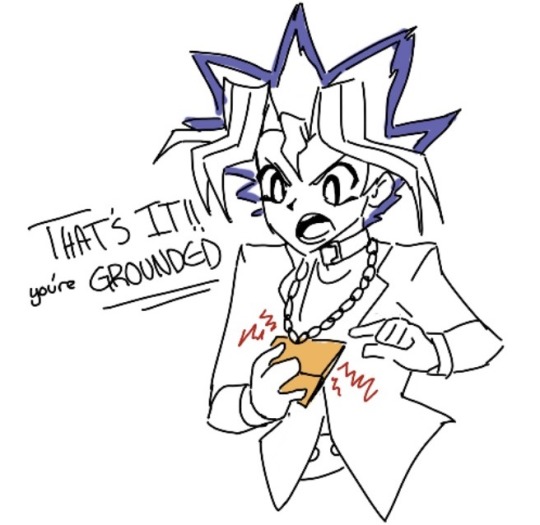
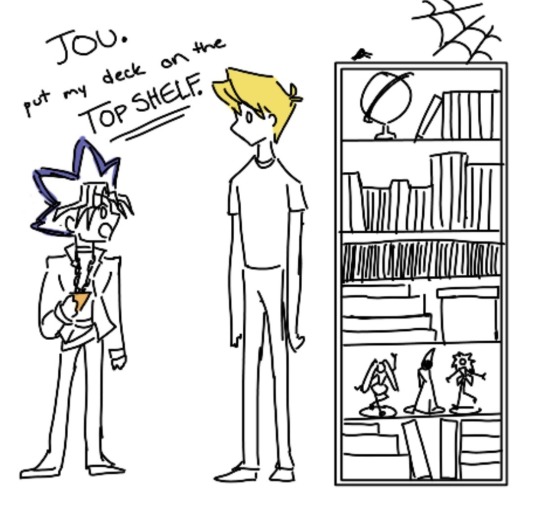

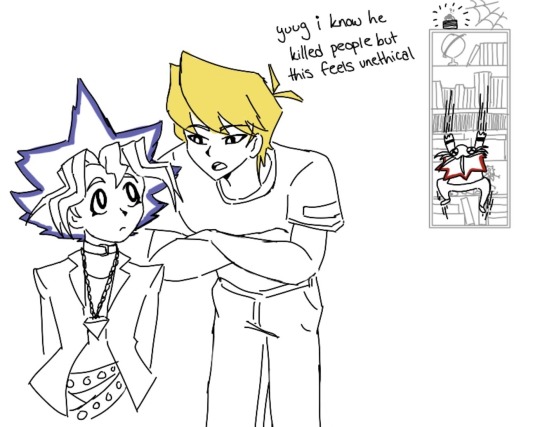
got in trouble for possessing yugi during class time again
#yugioh#yugioh dm#ygo#ygo dm#yugi mutoh#yami yugi#pharaoh atem#atem#jounouchi katsuya#joey wheeler#yugi#yugioh season 0#ygo s0#ygo season 0#doodle#yugi mutou
5K notes
·
View notes
Video
Mutoh - #ValueJet VJ-1604 + SC-1400D
https://dl.machinedalal.com/SQa4
Manufacturer: #Mutoh
Year: N/A
Machine Availability: Immediately from stock
Price: On Request
Location: Italy
#VJ1604 #SC1400D #DigitalPress #machinedalal
0 notes
Text
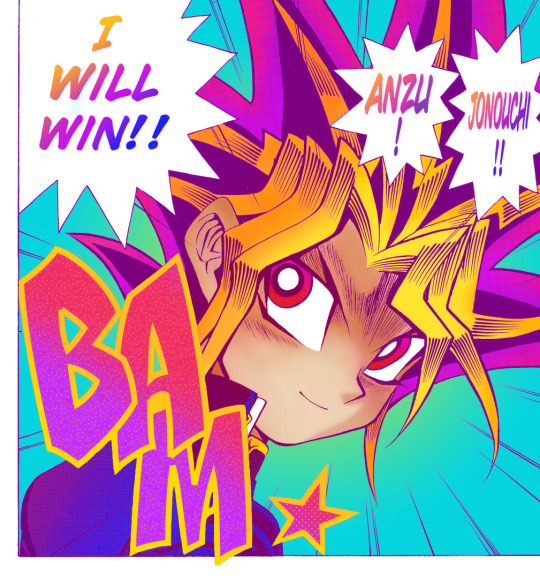
first time colouring a manga panel! had a lot of fun with it ^-^
#yugioh#yu gi oh#ygo#yami yugi#yugi mutou#yugi moto#yugi mutoh#atem#rowan art#manga edit#manga coloring#colored manga#god help me i am awful at tagging things.#but i learned a lot doing this one! fun project.
525 notes
·
View notes
Text
Idk, here take a glittery gay Yugi.

14K notes
·
View notes
Photo

神奈川県茅ヶ崎市。国道1号線の脇に、鎌倉時代の史跡があります。 水面から伸びた木の柱の数々。実は関東大震災とその余震で、地中から出現したものです。 旧相模川橋脚(複製) 当時の歴史学者によって、建久9年に源頼朝の重臣・稲毛重成が架けた橋の一部であると認められ、大正15年、国指定の史跡となりました。 『吾妻鏡』には、「橋供養に出席した頼朝が鎌倉に戻る途中で落馬した」と書かれていますが、その原因は定かではありません。 一説には、義経の亡霊を見て驚き、落馬したともいわれ、ここ茅ヶ崎には、義経を祭った神社や一族の霊を慰めるためといわれる石碑が残っています。
(紀行 第25回「神奈川県茅ヶ崎市」 | NHK大河ドラマ「鎌倉殿の13人」から)
0 notes
Text

Yu-Gi-Oh! Dark Duel Stories
Gameboy Color
2000
#gaming#retro gaming#video games#pixel art#yu gi oh#yu-gi-oh#yugioh#yugi#yugi mutou#yugi mutoh#yugi muto#kuriboh#retro anime#tcg#yugioh tcg#dark duel stories#gameboy#game boy#game boy color#gameboy color#2000s#2000#nostalgia#nostalgic#anime#konami#nintendo
621 notes
·
View notes
Text
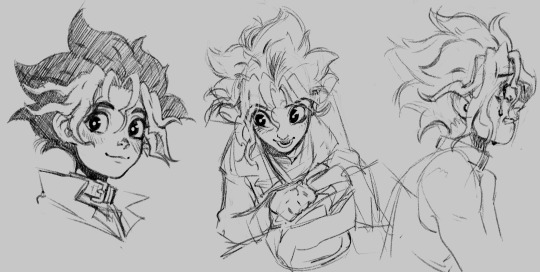
Got hit by nostalgia.
749 notes
·
View notes
Text

finished season 4 and ive got thoughts
#feel free to yell at me abt this season cuz good lord#yugioh#ygo#yugioh doma#doma#waking the dragons#ygo dm#yugi mutoh#yugi mutou#yami yugi
283 notes
·
View notes
Text

connected
#lost the will to finish this teehee#wanted to draw yugi though so i pulled through#for him.#yugioh#ygo#yugioh dm#ygo dm#yugi mutou#yami yugi#yugi mutoh#puzzleshipping#<- if you want#art
255 notes
·
View notes
Text

34 notes
·
View notes
Text
또 하나의 나, 넌 누구야? 네가 궁금해

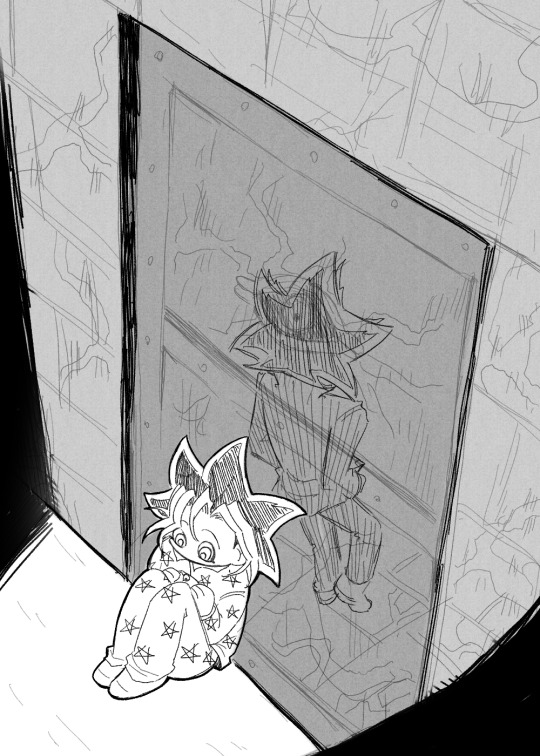
...글쎄.
2K notes
·
View notes
Text
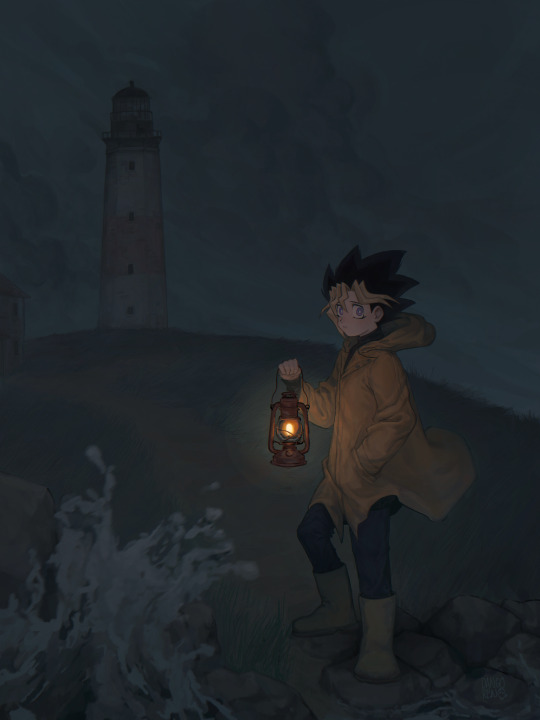
Read a really good fic, felt inspired, drew some fan art.
Original fic: “Keep the Light Shining” by clydeside
629 notes
·
View notes
Text
I love how Seto Kaiba has the perfect foundation to become the starting antagonist that becomes part of the friend group after he’s defeated and the bigger fish, actually evil bad guy appears, but instead he keeps telling the soul stealing evil bad guys that they have to get in line cause what really matters is that he get his rematch against Yugi so he can finally reclaim his title as the world’s best player of a Children’s Card Game. And he is so dedicated to this that he will throw as many wrenches into the plans of the bad guys as possible, not out of a desire to help the protagonist or join the friend group of protagonists, but cause he refuses to let them get a crack at beating Yugi cause that is his right. It’s so bad that the 2016 movie legit has him build a machine at the top of an orbital elevator that will open a physical portal to the afterlife so he can finally get his rematch. And I just love that level of petty.
6K notes
·
View notes
Text

👀He's judging.
A quick art for 2am idea.
#ygo#yugioh#yami yugi#yugioh season 0#ygo season 0#yugi mutou#yugi moto#yugi mutoh#yugioh s0#ygo s0#digitalart#my art#the new brushes are fun tho ;p#s0 still the best season ngl#atem
619 notes
·
View notes